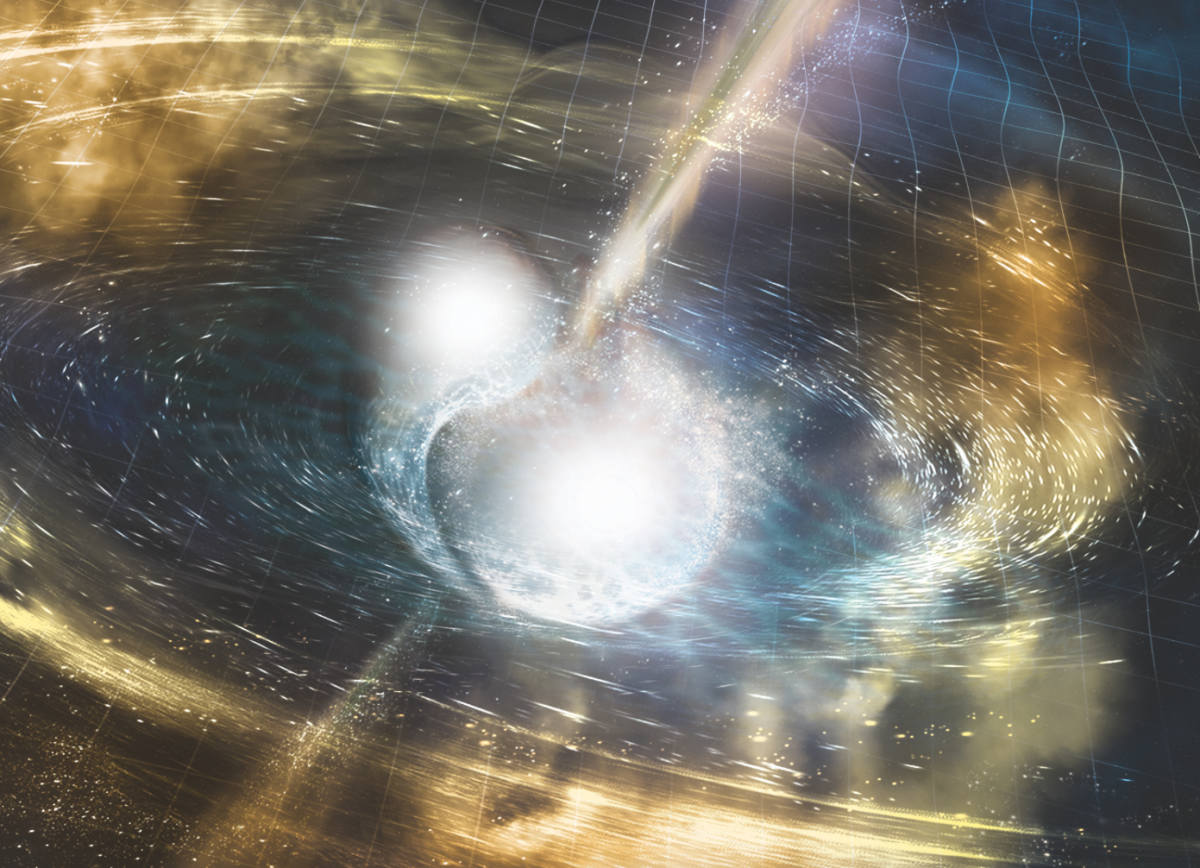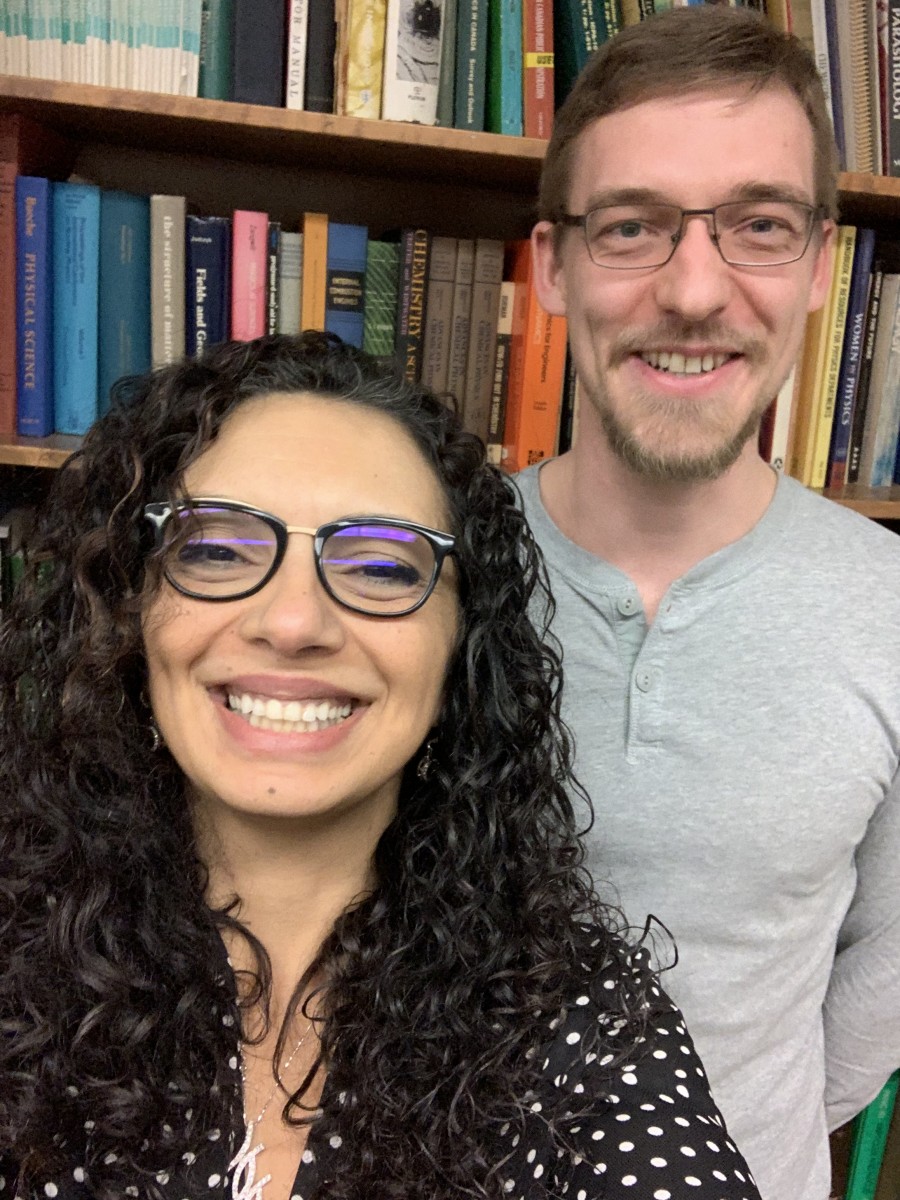
Artist's impression of a kilonova, by A. Simonnet
A kilonova in our neighbourhood
Not “super,” but still pretty good
An international team of researchers, led by U of M astrophysicist Dr. Samar Safi-Harb, proposes that the merging of two neutron stars relatively near the Earth has created a “kilonova remnant” – opening a new window to studying this astrophysical phenomenon.
Safi-Harb notes: “The X-ray emission from the kilonova event has been interpreted in the literature as something other than thermal emission. But we now have hints of thermal, hot glowing X-ray gas, that could arise from a newborn kilonova remnant (KNR).“
Imagine what happens when two neutron stars collide
When massive stars more than eight times the mass of our Sun reach the end of their lives, they explode. These supernova explosions release huge outbursts of energy that can outshine an entire galaxy, and can be detected by Earth-based telescopes, despite their immense distances from us.

Dr. Samar Safi-Harb and 1st year student Neil Doerksen
Left behind, inside these supernovas, are stellar cores that are compressed to extreme densities, sometimes converted to neutron degenerate matter, or neutron stars. They are so dense and massive, a teaspoon of such matter would weigh tens of millions of tonnes.
Neutron stars can emit radiation across the electromagnetic spectrum and can have some of the strongest magnetic fields in nature. In fact, some have such strong magnetic fields, they are known as magnetars.
It gets weirder. Some neutron stars are in binary systems, and in such an arrangement can pull matter from their companion stars and increase their rotation periods to incredible levels, even to milliseconds. And because of their high density and gravity, neutron stars can bend light, create time dilation, and cause huge redshifts of the wavelengths of light trying to escape from their surface.
So imagine what happens when two neutron stars collide.
In 1916, Einstein’s Theory of General Relativity predicted that gravitational waves would be emitted as two stars in orbit around one another lost energy when they “wound down.” Two rotating neutron stars were found to be doing just that in 1974, giving indirect evidence for gravitational waves. But gravity waves were finally detected a few years ago when LIGO, the Laser Interferometer Gravitational Wave Observatory, detected them from twin black holes.
On Aug 17, 2017, both light and gravity waves were observed for the first time coming from the same source, called GW170817. It turns out that this object is actually two neutron stars that are combining into one object, the first merger event (called a kilonova) emitting gravitational waves that involved objects other than black holes.
But over a year later, astronomers continue to debate what the violent neutron star merger actually produced.
Safi-Harb’s team re-examined data from the NASA’s Chandra X-ray Observatory following the 2017 detection of the GW170817 event by LIGO. Their analysis suggests that the coming together of the two neutron stars created a kilonova remnant.
“This opens a new window for interpreting the aftermath of this neutron star merger,” she says, “creating the new field of study of multi-messenger astrophysics of kilonova remnants. Such objects can evolve on much faster timescales than supernova remnants, presenting us with a new means to probe the formation of the heavy elements in the Universe.”
The only neutron star merger anywhere near Earth, GW170817 confirms the connection between neutron star mergers and short-duration gamma-ray bursts. X-ray observations have shed new light on the nature of this merger and its evolution.
Safi-Harb notes: “The evidence for thermal X-ray emission reported here stresses the importance of, not just the need to follow-up these sources as they evolve, but also the need for deep imaging and spectroscopic X-ray observations.”
Working with Safi-Harb was Neil Doerksen, a first-year astrophysics student whose Faculty of Science Undergraduate Research Award was instrumental in his share of the discovery.
“My experience on this research project was absolutely top notch,” he explains. “Beyond the publication of the paper, it’s the journey, the grit, the grind, and the friendships that are most valuable to me. They helped create discipline in my life and deepened my understanding and appreciation for the universe.”
The paper by Safi-Harb and her colleagues has been published in the February 2019 issue of the Journal of the Royal Astronomical Society of Canada.







Congratulations Neil for your contribution to the paper by Safi-Harb. I must have had a premonition when I gave you that telescope all those years ago.